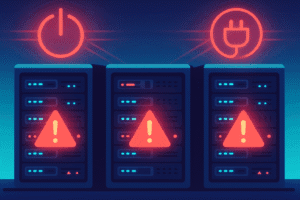How to Manage Screen Time and Tech Burnout
In the hyperconnected world of 2025, screen time is at an all-time high. Between remote work, social media, streaming, and endless notifications, tech burnout has become a silent epidemic. But don’t worry—regaining control of your digital life is possible.
This guide on How to manage screen time and burnout walks you through practical, science-backed steps to balance productivity and peace of mind in a screen-heavy world.
What Is Tech Burnout?
Tech burnout is the physical and emotional exhaustion caused by overexposure to screens, digital overload, and lack of boundaries with technology.
Common symptoms include:
- Mental fatigue or brain fog
- Eye strain and headaches
- Reduced productivity
- Poor sleep quality
- Anxiety or irritability when disconnected
As noted by the World Health Organization, managing burnout is critical for long-term mental health and productivity.
How Much Screen Time Is Too Much?
Studies show that adults spend over 11 hours a day interacting with screens. While not all screen time is bad, passive consumption (e.g., scrolling social media or binge-watching) is more harmful than intentional use (e.g., learning or creative work).
“It’s not about the number of hours—it’s about the quality of your engagement.”
— Dr. Cal Newport, author of Digital Minimalism
How to Recognize the Signs Early
Burnout doesn’t happen overnight. Watch for these early red flags:
- You reach for your phone first thing in the morning
- You can’t focus without background noise or stimulation
- You feel guilty after long hours of screen time
- You avoid real-world interactions
If this sounds familiar, it’s time to take back control.
10 Practical Tips to Reduce Tech Burnout
1. Set Screen-Free Zones
Create physical boundaries—like no phones in the bedroom or during meals. Use products like Techless Wisephone if you need extra help.
2. Use the 20-20-20 Rule
Every 20 minutes, look at something 20 feet away for at least 20 seconds. It’s a simple hack to prevent digital eye strain.
3. Schedule “Do Not Disturb” Hours
Use features like Focus Mode or Downtime on your device to block notifications during work or rest.
4. Install Usage Trackers
Apps like Freedom, RescueTime, or Digital Wellbeing give insights into your habits—and let you set limits.
5. Move Your Body
Replace 30 minutes of screen time daily with light movement. Stretching, walking, or yoga all help reset the mind.
6. Try a “Digital Sabbath”
One day a week, go tech-free. Spend time outdoors, with family, or engaging in offline hobbies.
7. Audit Your Apps
Unfollow, uninstall, and declutter. Ask yourself: “Does this app bring value, or just dopamine?”
8. Switch to Blue Light Filters
Use tools like f.lux or Night Shift on screens to reduce blue light exposure—especially at night.
9. Read More Offline
Go analog with physical books, journals, or print magazines to rest your eyes and stimulate focus.
10. Practice Mindful Technology Use
Before picking up your device, pause and ask: Why am I doing this? Set an intention.
Create a Digital Wellness Culture
Managing screen time isn’t just personal—it’s collective. If you’re a parent, leader, or teacher, foster healthier digital habits at home or work.
Check out Common Sense Media for resources on tech use in families and children.
Tools That Help
Here are a few free and paid tools that can help you reduce digital fatigue:
| Tool | Best For |
|---|---|
| Freedom | App/site blocking |
| RescueTime | Time tracking & analytics |
| Forest | Staying focused through gamified breaks |
| ScreenZen | Smartphone habit moderation |
| f.lux | Blue light filtering |
Final Thoughts
Technology is a tool, not a tyrant. The goal isn’t to go offline forever, but to build a digital life that supports your goals, not sabotages them. Start with small changes, stay consistent, and don’t be afraid to log off.
“Almost everything will work again if you unplug it for a few minutes… including you.”
— Anne Lamott
🔗 Related Content
- How to Clean Your Digital Life in 30 Minutes
- How to Improve Your Smartphone Battery Life
- The Best Tools for Taking Notes in 2025
Share this post:














Post Comment